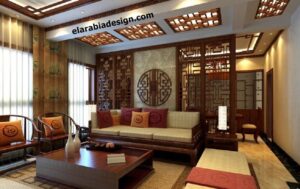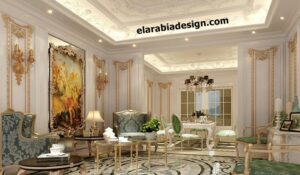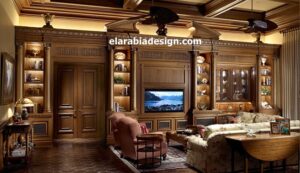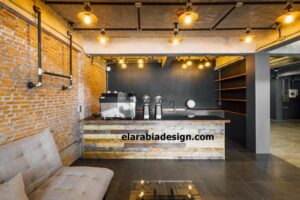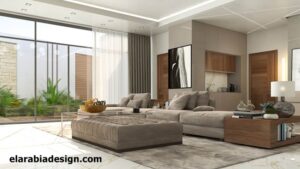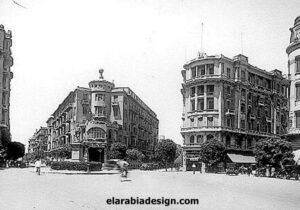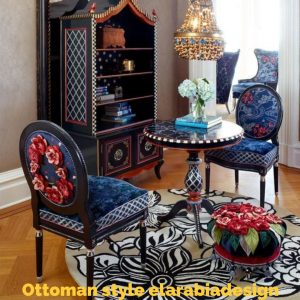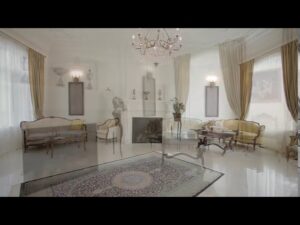محتوي المقال
The Baroque style in interior design is characterized by the shape of the oval rooms and the rooms are curved, and there are also rooms that take the shape of arches in the design, and the Baroque style is used in the design due to the abundance of decoration in apartments or houses, so we will talk in today’s article about the Baroque style in interior design in detail.
But first, you know the answer to the question, why do I deal with the interior designer Mohamed Moumia without anyone else??
The answer is in this video
Advantages of hiring an interior designer, Mohamed Moumia:
Submission of suggestions: Mohamed Moumia works as a professional interior designer to present his innovative and creative proposals to make optimal use of the interior spaces. He has experience and art in transforming ordinary spaces into distinctive and attractive places.
Follow-up and work: Once the best proposal is selected and approved by the owner, Mohamed Moumia works on the project continuously. Carefully follows up on the project and ensures that the design is executed in an accurate manner according to the owner’s vision.
Submitting Suggested Modifications: Mohamed Moumia knows that interior design projects often need modifications to achieve the desired result. Therefore, he works with the owner to determine the number of modifications that are acceptable after the completion of the project, and works to implement the modifications in a timely manner.
Delivery: Upon completion of the work, Mohamed Moumia presents the project in the form of a visual design file, such as a PDF containing collages showing the final design. It is also possible to submit a short video showing the design in 3D, and gives a clear idea of the final project.
Commitment to style and integrity: Mohamed Moumia ensures that the general architectural style of the area or space being designed is maintained. It also pays great attention to safety and security factors, ensuring a safe and comfortable indoor environment.
Experience and Distinction: Mohamed Moumia has more than 18 years of experience in the field of interior design. He is an accredited Egyptian TV designer, with an excellent reputation and proven experience in his field.
In short, Mohamed Moumia represents a distinguished and professional interior designer with creativity and experience in transforming interior spaces into beautiful and functional spaces. Seeks to achieve the owner’s vision and to provide projects that meet his needs and exceed his expectations.
call now
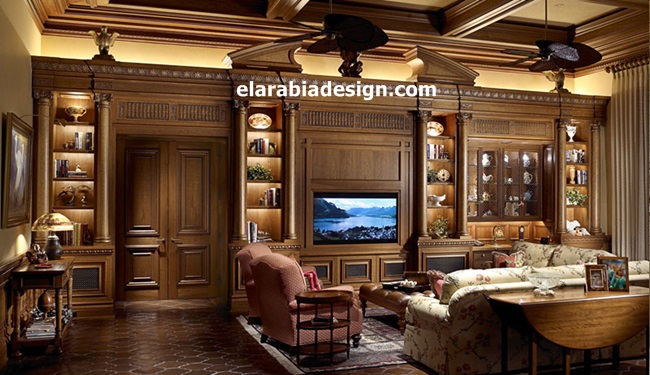
History of the Baroque Style
- The Baroque style prevailed in European art at the beginning of the seventeenth century and gained popularity before the beginning of the eighteenth century, after which it began to leave fashion and lose its pumping and luxury.
- In Eastern Europe, the style was relevant until the end of the eighteenth century.
- During the century it underwent some important changes: from the early aesthetic Baroque (1620-1650), to the relatively discreet, in France called Louis XIII, the Mature Baroque (1650-1715).
- Under Louis XIV, it acquires the monumental forms of the late Baroque, which bear the marks of the next generation – after 1715, the Rococo Baroque style appears in the interiors of Louis XV.
Characteristics of Baroque architecture
The Baroque Roman Catholic Church, in Lyon, France, was built in the 17th and 17th centuries and displays many typical Baroque features:
- Complex shapes, out of the box.
- Excessive ornamentation, often gilded.
- Large oval shapes, with curved lines replacing the classic rectilinear.
- crooked columns.
- Great stairs.
- upper domes.
- Ornate, open bond.
- trompe l’oeil paintings.
- Pay attention to light and shadow.
- Decorative figurines, often in niches.
Italian Baroque style
- In ecclesiastical architecture, Baroque additions to Renaissance interiors often included decorative stucco molding, originally called sepporum, on the high altar in a church.
- Designed by Gianlorenzo Bernini (1598-1680), Baldocino was designed for St. Peter’s Basilica in the Renaissance period and is an icon of Baroque building.
- Eight stories high on pillars, 1630 bronze sculptures, architecture at the same time.
- This Baroque is the same exuberance expressed in non-religious buildings such as the famous Trevi Fountain in Rome.
- For two centuries, artist and architecture dominated throughout Europe during the fourteenth and sixteenth centuries, the Renaissance era of classical forms, symmetry and proportion.
- Towards the end of this period, artists and architects such as Giacomo da Vignola began to break the ‘rules’ of classical design, in a movement that became known as Mannerism.
- Others say a new way of thinking began with Michelangelo’s edition of Rome’s Capitoline Hill, when he incorporated radical ideas about space and a dramatic presentation that transcended the Renaissance.
- By 1600, all the rules were broken in what we now call the Baroque period.
French Baroque style
- Louis XIV of France (1638-1715) lived his entire life during the Baroque era.
- So it seems natural that when he remodeled his father’s hunting lodge at Versailles (and moved the government there in 1682), the fanciful style of the day would take precedence.
- The tyranny and ‘divine’ right of kings is said to have reached their highest levels during the reign of King Louis XIV of the Sun King.
- The Baroque style became more conservative in France, but grand in scale. While lavish details were used, French buildings were often symmetrical and orderly.
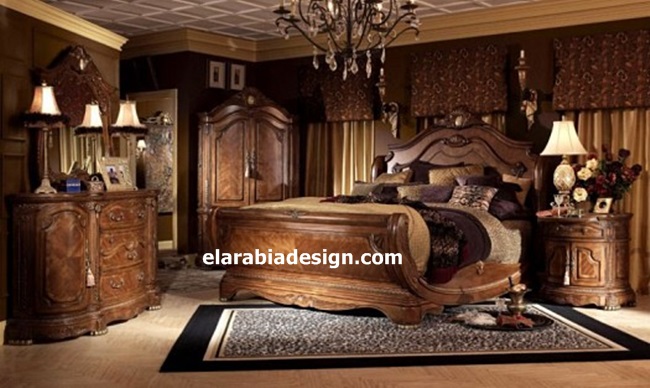
English Baroque style
- Shown here is Castle Howard in northern England, where asymmetry within symmetry is a sign of a more conservative Baroque.
- The lavish Baroque style of the house took shape throughout the entire eighteenth century.
- Baroque architecture emerged in England after the Great Fire of London in 1666.
- The English architect Sir Christopher Wren (1632-1723) met the much older, eminent Italian architect Ginlorenzo Bernini and was ready to rebuild the city.
- Wren used elegant Baroque design when he redesigned London, the best example being the famous St Paul’s Cathedral.
Belgian Baroque style
- The Church of Saint Carlos Borromeo was built in 1621 in Antwerp, Belgium by the Jesuits to attract people to the Catholic Church.
- The original interior artwork was worked on by Peter Paul Rubens (1577-1640), which was designed to simulate an ornate banquette, although much of his work was destroyed by a blazing fire in 1718.
- The church was contemporary and upscale.
- The technology of its time – the large panel you see here is linked by a mechanism that allows it to be changed as easily as a computer screensaver.
- The nearby Radisson Hotel promotes the famous church as a must-see.
- Architectural historian Talbot Hamlin would agree with the Radisson – it’s a good idea to see Baroque architecture in person ‘most Baroque buildings’, he wrote, ‘suffer in pictures’.
Austrian Baroque style
- This 1716 palace designed by Austrian architect Johann Bernhard Fischer von Erlach (1656-1723) for the 1st Prince of Trotzson stands as one of many stately Baroque palaces in Vienna, Austria.
- Palais Trautson displays many of the time-honored architectural features of the Renaissance – columns, pilasters and stucco – yet commands golden motifs and shades.
- The Restrained Baroque Renaissance was promoted in Austria.
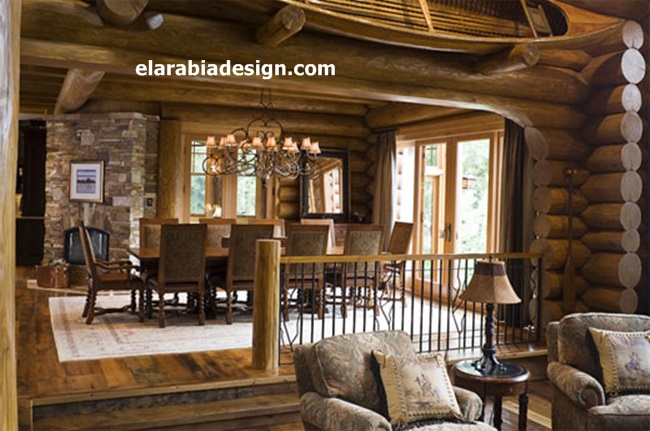
German Baroque style
- Moritzburg Castle in Germany began as a hunting lodge and has a complex and tumultuous history.
- In 1723, Augustus the Strong expanded from Saxony and Poland and reshaped the possessions into what is today called the Saxon Baroque.
- The area is also known for a type of finely carved Chinese porcelain called Meissen porcelain.
- In Germany, Austria, Eastern Europe, and Russia, Baroque ideas are often carried out with a lighter touch.
- The muted colors and curved shapes of the buildings gave the frosted cake look a cool look.
- The term Rococo has been used to describe these lighter versions of the Baroque style.
Conclusion
We advise you to know the difference between an interior designer and other?
- Interior designer job The interior designer is responsible for designing and utilizing the interior spaces of a home to meet the basic needs of its residents.
- That is, it depends on employing the place appropriately to meet the purpose. It is typical for an interior designer to have an associate degree in their field.
- Interior design is taught in the Colleges of Fine and Applied Arts and Architecture. Therefore, he relies on academic science in the home design process.
- The reliance of interior designer, interior designer Mohamed Moumia, on engineering principles in his work does not mean that he ignores the aesthetic form.
- As one of his tasks is to design the decoration and choose the style as well, as this matter falls within the goal of employing the spaces that he achieves.
- As for the interior designer, he is the person who revives the aesthetic and artistic side of the interior design.
- He cares more about choosing colors, designing furniture, and adding aesthetic elements.
- Therefore, we advise you to contact elarabiadesign
Finally, why do you deal with ElarabiaDesign?
- The company is under the leadership of interior designer Mohamed Moumia, not just an investor.
- An interior designer, not another engineering major.
- He has his fame on Egyptian television, and therefore his reputation must be preserved.
- The variety of projects that have been designed and supervised.The company supervised residential, administrative, medical, commercial, restaurants and other projects.
Watch this video at elarabiadesign>>>>
call now
What is the style of Baroque?
The Baroque style is an artistic and architectural style that originated in Italy in the late 16th century and spread throughout Europe in the 17th and 18th centuries. It is characterized by grandeur, drama, movement, tension, emotional exuberance, and an emphasis on the illusory and the theatrical.
In art, the Baroque style is characterized by grand, dramatic compositions with strong contrasts of light and dark, and a focus on the dramatic, emotional, and psychological effects of the work. The human form is often exaggerated and dramatic, with dramatic gestures and poses. Baroque paintings often depict scenes from religion, mythology, or history, and are meant to evoke strong emotions and move the viewer.
In architecture, the Baroque style is characterized by the use of curves, counter-curves, and dramatic movement, often in the form of elaborate facades, domes, and decorative details. The style often features a mix of classical elements, such as columns and pediments, with elaborate ornamentation and dramatic, dynamic forms.
Overall, the Baroque style was a dramatic and theatrical response to the ideals of the Renaissance, and was meant to evoke awe, wonder, and emotion in the viewer.
What are 4 main characteristics of the Baroque?
The four main characteristics of the Baroque style are:
Grandeur and drama: The Baroque style is characterized by grand and dramatic compositions, designed to evoke strong emotions and awe in the viewer.
Movement and tension: The Baroque style is often characterized by the use of curves, counter-curves, and dramatic movement, which creates a sense of energy and movement in the works of art and architecture.
Emphasis on illusion and theatricality: The Baroque style is known for its focus on illusion and theatricality, often using dramatic lighting, tenebrism (the use of strong contrasts of light and dark), and dramatic poses and gestures to create a sense of drama and emotional impact.
Decorative richness: The Baroque style is also characterized by its ornate and elaborate decoration, often featuring a mix of classical elements with elaborate ornamentation and dramatic, dynamic forms. This decoration often serves to emphasize the grandeur and drama of the works of art and architecture.

